The Town of Le Puy in Early Marist History
Part 1 of 2
The Cathedral town of Le Puy, with a population of about 19,000, is 140 km south-west of Lyons. The town is built in the crater of a volcano. Two volcanic plugs -- puy, in French – rise over it. The chapel of Saint Michel D’Aguilhe, almost 1100 years old and 630 metres high, is on top of one of these peaks; and on top of the other, there is a 16-metre tall statue of Mary, Notre Dame de France.
The sculptor Jean-Marie Bonnassieux designed the iron statue, cast from 213 Russian cannons captured in the Seige of Sevastopol in the Crimean War. The statue was displayed to an audience of 120,000 people for the first time on 12 September 1860.
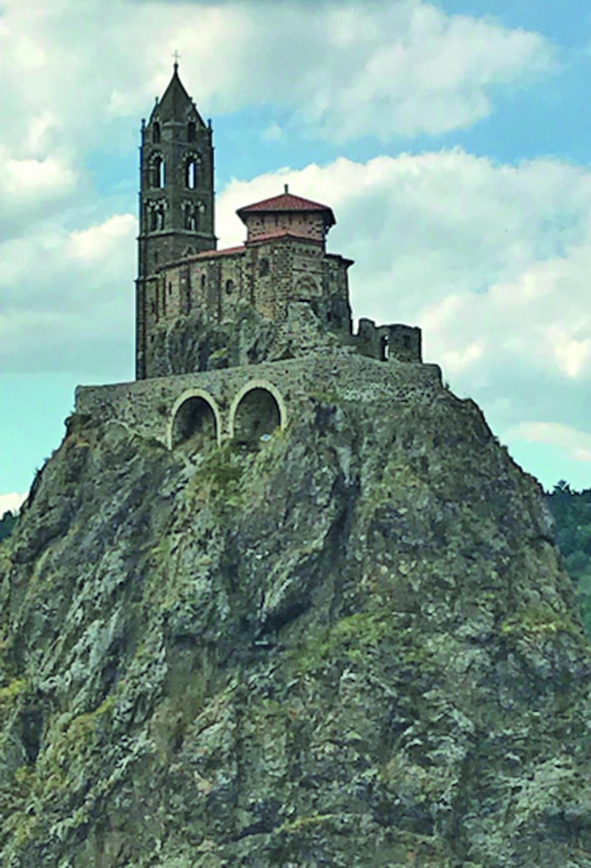
Chapel of Saint Michel 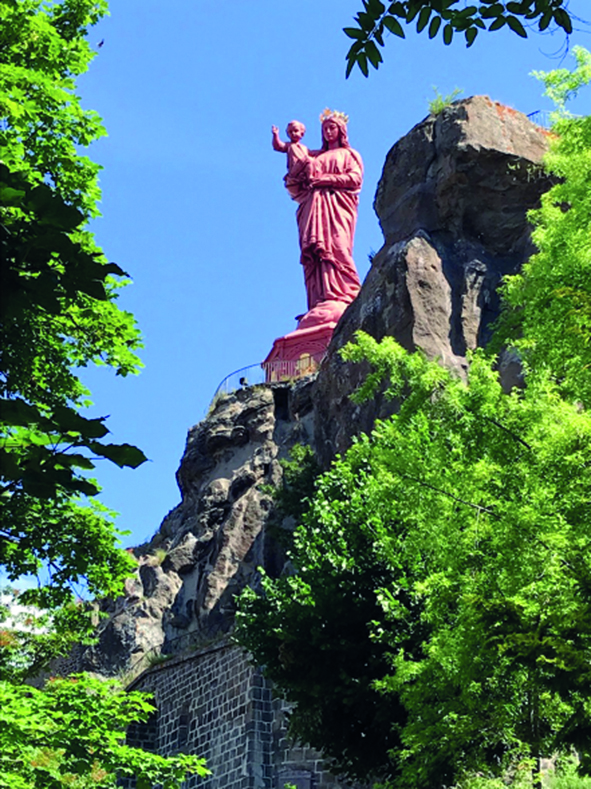
Notre Dame de France
The Cathedral sits on top of a massive volcanic rock. It dates mostly from the first half of the 12th century, when the existing church was enlarged to accommodate the increasing number of pilgrims. Restoration work took place in the 18th century, and again in the 19th.
Its status as a site for the veneration of the Virgin Mary dates from the 4th century, and it has been an episcopal see since the 7th century.
Late in the 10th century, the town became famous for its statue of Our Lady of Le Puy, as well as for being a starting point for pilgrimages to Santiago de Compostela, some 1,400 km away. In the year 951, one of the first pilgrims from Le Puy was the bishop of the town, Godescalc.
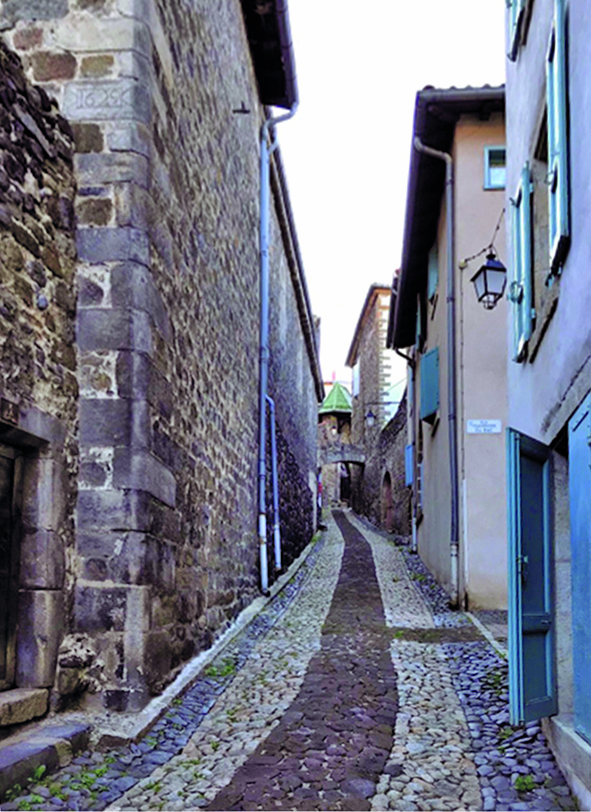
A typical alley in Le Puy,
leading to the Cathedral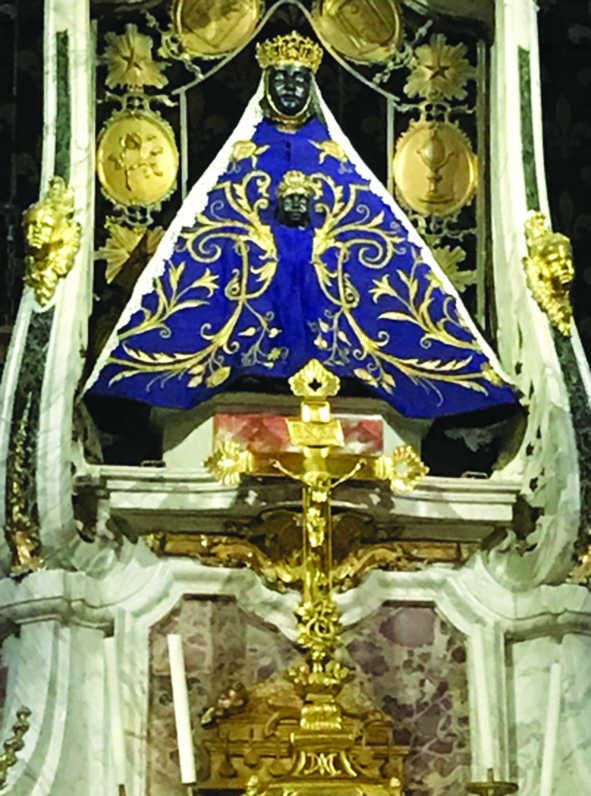
Black Madonna and Child
It is believed that Godescalc also promoted devotion to Our Lady, venerated in the form of a Black Madonna and Child. The figure of the Madonna and Child seen in the Cathedral today above the main altar is a re-creation of an older version burned in 1794 during the French Revolution. It is reputed to be a very exact copy of the original.
St Marcellin Champagnat’s aunt belonged to the Congregation of the Sisters of St Joseph, which had begun in Le Puy in 1650. She became Marcellin’s first instructor in the Catholic faith when the Revolution drove her to live in the Champagnat home. Jean François Régis, a Jesuit saint, was based in Le Puy for his missions in parishes from 1633 until 1640. During tough economic times, he encouraged the town’s women to manufacture lace, for which Le Puy is still well-known.
Jean-Claude Courveille
Jean-Claude Courveille, seventh of thirteen children of Margaret and Claude Courveille, was born on 15 March 1787. Smallpox caused him to go almost completely blind when he was ten. In 1809, he bathed his eyes with oil from the votive lamps at the shrine of the Black Madonna in the Cathedral in Le Puy. His blindness was instantly cured: “Suddenly, his sight was restored. He found that he could distinguish even the most distant objects: the pipes of the organ far back in the apse and the dim squinches supporting the dome. His bursting heart immediately vowed a life of service and thanksgiving to God and to the Mother of God whose prayer had cured him” (Hosie, p. 38).
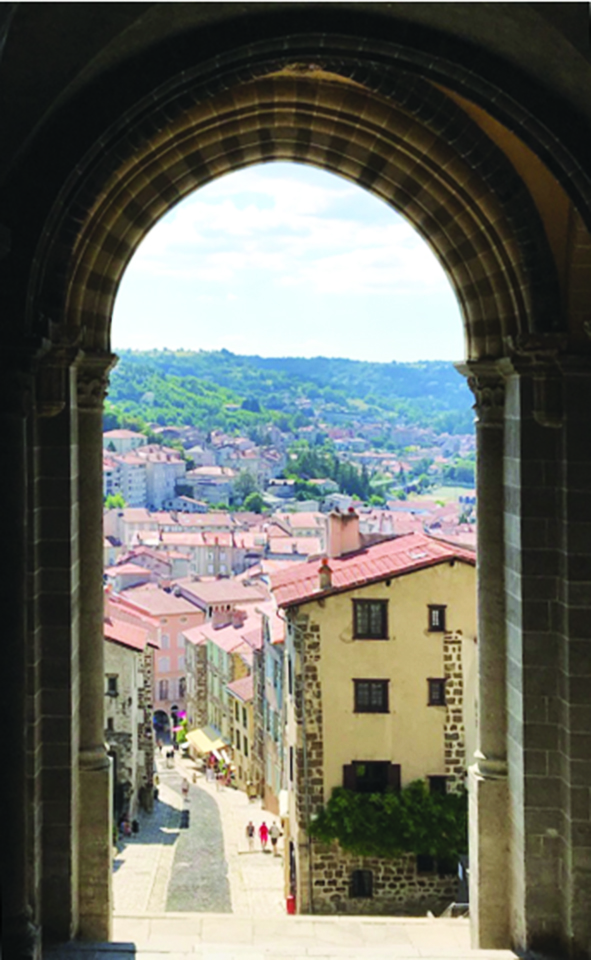
The view from the Cathedral’s main doors 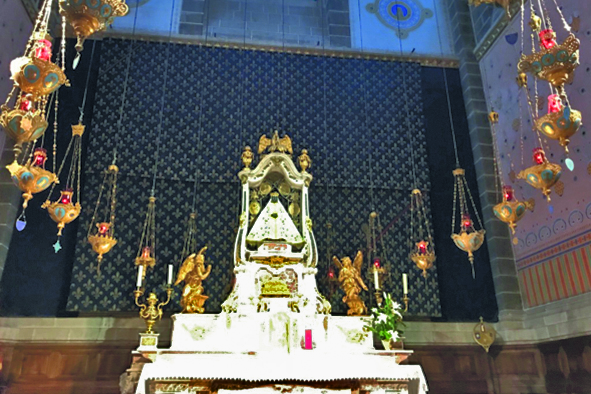
Votive lamps surrounding the shrine
of the Madonna of Le Puy
On the Feast of the Assumption each year, thousands of pilgrims arrived in Le Puy, at that time with a population of 10,000, to venerate the Black Madonna.
On 15 August 1812, Courveille returned to the site of his healing. There he heard, “not with the ears of the body, but with those of the heart, interiorly but very distinctly”, the call of Our Lady to form a group “which will call itself the Society of Mary, whose members will call themselves Marists” (Origines Maristes II, Doc 718).
 Entries(RSS)
Entries(RSS)